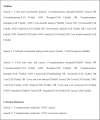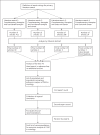Economic Evaluation of Complementary and Alternative Medicine in Oncology: Is There a Difference Compared to Conventional Medicine?
- PMID: 27607437
- PMCID: PMC5588308
- DOI: 10.1159/000450645
Economic Evaluation of Complementary and Alternative Medicine in Oncology: Is There a Difference Compared to Conventional Medicine?
Abstract
Objective: To analyze the financial burden of complementary and alternative medicine (CAM) in cancer treatment.
Materials and methods: Based on a systematic search of the literature (Medline and the Cochrane Library, combining the MeSH terms 'complementary therapies', 'neoplasms', 'costs', 'cost analysis', and 'cost-benefit analysis'), an expert panel discussed different types of analyses and their significance for CAM in oncology.
Results: Of 755 publications, 43 met our criteria. The types of economic analyses and their parameters discussed for CAM in oncology were cost, cost-benefit, cost-effectiveness, and cost-utility analyses. Only a few articles included arguments in favor of or against these different methods, and only a few arguments were specific for CAM because most CAM methods address a broad range of treatment aim parameters to assess effectiveness and are hard to define. Additionally, the choice of comparative treatments is difficult. To evaluate utility, healthy subjects may not be adequate as patients with a life-threatening disease and may be judged differently, especially with respect to a holistic treatment approach. We did not find any arguments in the literature that were directed at the economic analysis of CAM in oncology. Therefore, a comprehensive approach assessment based on criteria from evidence-based medicine evaluating direct and indirect costs is recommended.
Conclusion: The usual approaches to conventional medicine to assess costs, benefits, and effectiveness seem adequate in the field of CAM in oncology. Additionally, a thorough deliberation on the comparator, endpoints, and instruments is mandatory for designing studies.
© 2016 S. Karger AG, Basel.
Figures
References
-
- Eschiti VS. Lesson from comparison of CAM use by women with female-specific cancers to others: it's time to focus on interaction risks with CAM therapies. Integr Cancer Ther. 2007;6:313–344. - PubMed
-
- Horneber M, Bueschel G, Dennert G, et al. How many cancer patients use complementary and alternative medicine: a systematic review and metaanalysis. Integr Cancer Ther. 2012;11:187–203. - PubMed
-
- Molassiotis A, Fernadez-Ortega P, Pud D, et al. Use of complementary and alternative medicine in cancer patients: a European survey. Ann Oncol. 2005;16:655–663. - PubMed
Publication types
MeSH terms
LinkOut - more resources
Full Text Sources
Other Literature Sources
Medical
Miscellaneous



